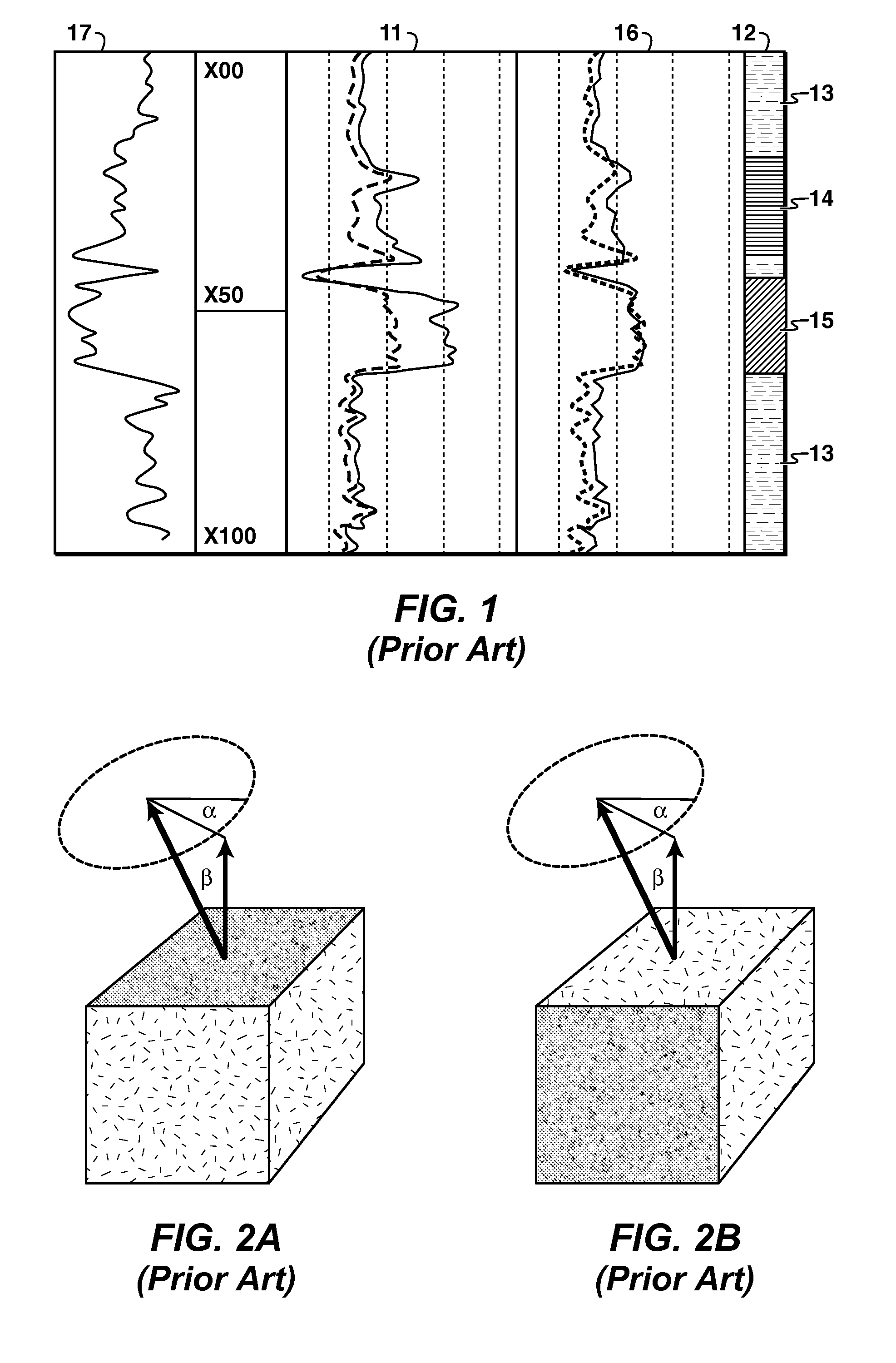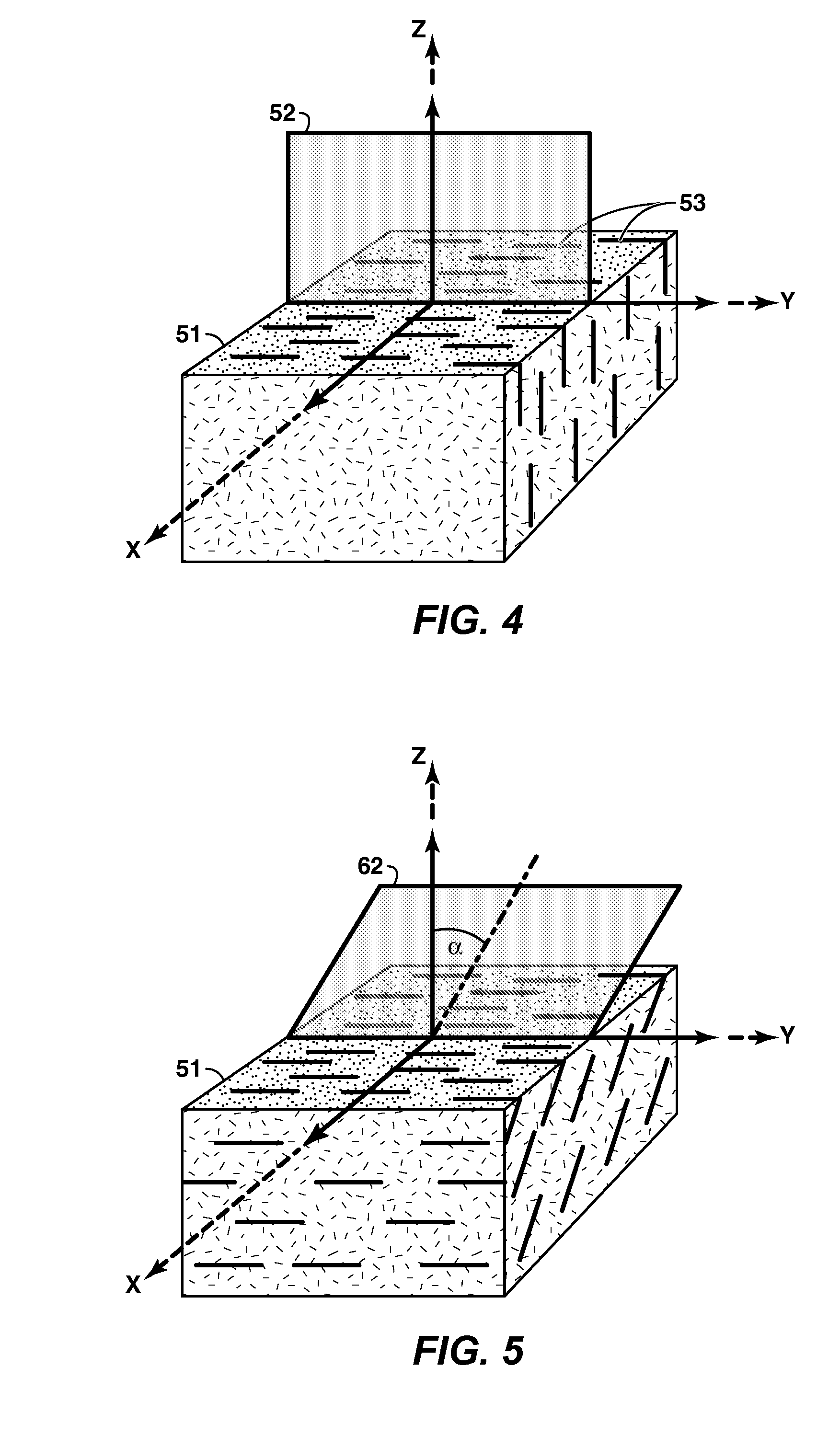Method For Reservoir Fracture and Cross Beds Detection Using Tri-Axial/Multi-Component Resistivity Anisotropy Measurements
a technology of resistivity anisotropy and cross bed, which is applied in the field of hydrocarbon exploration and production, can solve the problems of rsub>v /sub>and rsub>h /sub>inversion problems
- Summary
- Abstract
- Description
- Claims
- Application Information
AI Technical Summary
Benefits of technology
Problems solved by technology
Method used
Image
Examples
Embodiment Construction
[0027]The present invention is a method for inverting reservoir bi-axial anisotropy and identifying complicated fracture / cross-bedding system by using tri-axial induction logs and wellbore survey / image log data. Bi-axial anisotropy is a direct indication of fracture / cross-bedding reservoir rock, and has a significant impact on reservoir characterization, e.g. hydrocarbon pore fluid estimation. The present inventive method will yield profiles of Rxx, Ryy and Rzz, from which it will be possible to ascertain the presence of faults, among other benefits of knowing the resistivity model in its full, anisotropic complexity.
Description of Biaxial Resistivity System
[0028]Next, the conductivity equations for the biaxial anisotropic resistivity formation will be developed by considering four, progressively more general, cases.
Uniaxial / VTI Bed and Orthogonal Fault / Fracture System
[0029]One example of a biaxial anisotropic formation may be described as laminated beds intercepted by perpendicular...
PUM
 Login to View More
Login to View More Abstract
Description
Claims
Application Information
 Login to View More
Login to View More - R&D
- Intellectual Property
- Life Sciences
- Materials
- Tech Scout
- Unparalleled Data Quality
- Higher Quality Content
- 60% Fewer Hallucinations
Browse by: Latest US Patents, China's latest patents, Technical Efficacy Thesaurus, Application Domain, Technology Topic, Popular Technical Reports.
© 2025 PatSnap. All rights reserved.Legal|Privacy policy|Modern Slavery Act Transparency Statement|Sitemap|About US| Contact US: help@patsnap.com



